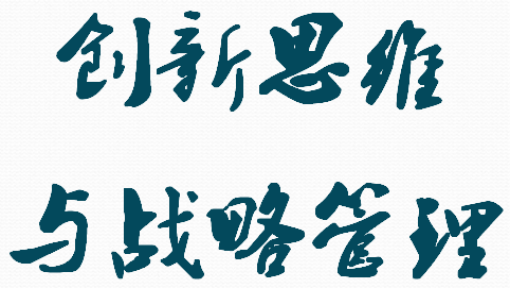
当前课程知识点:数字集成电路分析与设计 > The Wire > 2. Capacitance > Video
So still remember this picture?
At that time I introduced the major components
of the capacitance of the inverters.
So we know that this is capacitance
between the gate and drain
And we should think about the overlap
capacitance between the gate and drain,
as well as channel capacitance
So in terms of overlap capacitance
the Miller effect should be taken into account.
In terms of channel capacitance,
if we assume that the input is a step input.
Therefore we don’t have any channel
capacitance between the gate and drain
And these two are the junction capacitance,
which consists of three sidewalls
and one bottom plate junction capacitance
And this is the gate capacitance of the load gate, right?
Including the overlap capacitance
and channel capacitance. Right?
So at that time we ignore the capacitance
Contributed by the wire,
actually we have the capacitance like
this which is connected between VOUT and GND right?
So we, in reality we should
Lump all of them together into one capacitor,
located between the VOUT and GND
So in this lecture I would like to introduce
how we could calculate the capacitance of the wire
So this is the wire and this is the length of the wire.
This is the width of the wire
and this is the thickness of the wire. OK?
And we know that this one serves as
The plate which is placed above another plate
this one substrate right?
And between this plate,
I mean substrate and wire we have dielectric
SiO2 right? this is electric field,
this is electric field.
So the thickness of dielectric equals tox
So according to this we know
how to calculate the parallel-plate capacitance right?
Here we can make assumption
that the width of the wire is much bigger
much greater than the thickness of the dielectric.
So if we exploit the parallel-plate capacitance model.
The wire capacitance can be expressed as the capacitance equals
εox over tox times W times L. Right?
So this one stands for the area
Overlap area between the up plate and the bottom plate right?
And this is the permittivity of the dielectric
layer and tox is thickness of dielectric layer
And if the width and thickness are scaled by the factor of S. OK?
And also the length of the wire is scaled by a factor of SL.
therefore we can calculate that the scaling factor of the wire,
of the capacitance of the wire should be SL, right?
According to this
So this is very simple
This is the permittivity of the dielectric.
So the definition is that εox equals εr times ε0
ε0 here stands for the permittivity of the free space
Which is normalized to one. OK?
And εr here stands for the relative permittivity of the material. OK?
So this table gives us the permittivity,
relative permittivity of the different material.
So this is 1 for free space
Aerogel, this one, 1.5
And polyimides 3-4. And silicon dioxide equals 3.9. OK?
And aluminum and silicon
And in this foil you can find out
This is a cross-section view of the 0.25um interconnect
So you can see that with device dimensions scaling down
If you want to minimize the resistance of wires
it is desirable to keep the cross-section of the wires
As large as possible. Right?
Because the resistance is inversely proposal
to the area, the cross area of the wire. Right?
And also the, because the small value of W leads
to denser wiring and less area overhead.
Therefore we can witness a steady reduction in the W/H ratio.
Because this one, the W decreases, however,
W decreases to integrate more transistors
and length and wire on to the chip.
However at the same time
The thickness of the wire remain the same. Right?
Almost remain the same
to reduce the resistance.
Therefore we can witness a steady reduction
in the W/H ratio even below one.
If we have, you can find out if
we decrease the width and at the same time this one,
the thickness of the wire remain the same
therefore the fringing capacitance,
fringing capacitance I mean the capacitance
between this one, this one and this one
Become an issue, becomes an issue.This is fringing capacitance.
And also this one and this one. Right?
Here you can see we have wire and even the
Thickness of the wire is even bigger than the width of the wire.
So you can see this one. This is the thinner one.
And this is, the height is bigger
And this is smaller. Ok?
OK so in terms of the fringing capacitance,
so we have to consider the influence of the fringing capacitance
So how cloud we calculate the capacitance of the wire
So it is not simply using the parallel-plate capacitance
So we should decompose that one into two different capacitances.
One is the traditional parallel-plate capacitance.
The other one is, fringing, fringing capacitance
So here I can give you an example this is the wire
So we decompose this one into two kinds of capacitances.
One is the traditional parallel-plate capacitance
with the width of the wire equals W minus the thickness over two
W minus H over two. And the other component,
the other capacitance is the one to represent the fringing capacitance with.
It is modeled by the cylinder with diameter equals the thickness of the wire.
So this is the diameter equals H. OK?
So these two, these two could be expressed as this one
So cwire equals cpp plus cfringe
equals this one and this one. OK?
And here, I give you a picture to demonstrate the relationship
between the parallel-plate capacitance and fringing capacitance.
So in this picture you can see.
The x axis stands for the width over the thickness of the dielectric
So this is the thickness, this is the width.
And y axis stands for the capacitance. So this one
This one the dashed line here stands for the parallel-plate capacitance
and this one, the curve, this one,
the solid curve and the dashed curve stands for the total capacitance
So you can see that, when the W over tdi is bigger than 1.5 OK?
and in this area, in this area, the parallel-plate capacitance dominates.
However when this one, when W over tdi is less 1.5
In this area you can find out the fringing capacitance dominates. Right?
Because the total capacitance consists
of fringing capacitance and parallel capacitance
And one interesting thing is that
you can see when the W over tdi is less than 1
Then the total capacitance approaches 1pf/cm.
Therefore it doesn't have any relation with the width of the wire
So it is very interesting to say that
We know that this expression to calculate the capacitance
of the wire is relatively complex
So the most frequently used approach is to
Most foundry will give you a table
Therefore you can look into the table
to find out the capacitance between different layers
For example, this is the aluminum one and this is poly.
So the aluminum one, between the aluminum one and the poly.
The parallel-plate capacitance equals this one
And this one stands for the fringing capacitance
So for example this is upper layer and this is lower layer
and the shadow-less this one stands for the parallel-plate capacitance.
The unit is af/um2. And this one
The shadowed layer stands for fringing capacitance.
The unit is af/um
when calculate the interwire capacitance,
I mean calculate the fringing capacitance,
we have to take into account the fringing capacitance of the two sides, two sides.
Because every wire has two sides, have two sides.
So that is very important
I will give you an example,
if we have aluminum wire with length equals 10cm
and width equals 1um
so calculate the total capacitance
So here the parallel-plate capacitance equals this one. Right?
And this one is, this is the length of the wire times the width of the wire.
This is the area of the wire times this one
So this one the 30af/um2 comes from this one right? comes from this one
And also the fringing capacitance,
this is the length of the wire times the 40af/um2.
The 40af/um2 comes from this one, comes from this one. OK?
And also I mentioned that the number 2 should be taken into account.
Because of two sides. Every wire has two sides
Therefore total capacitance equals 11 pf, right?
This is Cgroud.
We name it as the capacitance between the wire and GND
And also besides the parallel-plate capacitance,
fringing capacitance,
we also have the capacitance between different wires.
That is called interwire capacitance
For example this,
the capacitance between this one and this one.
We have this one, right?
The interwire capacitance, also this one, also this one. OK?
And also we still have a table
Therefore we can look into the table to find out
The value of the interwire capacitance between different layers
For example, this one and this one and this one,
this is the biggest one, and this is the smallest one. OK?
So that capacitance between the aluminum 5 is
115 af/um. And between the poly is 40 af/um.
And also we have the capacitance,
interwire capacitance between
The aluminum 1, aluminum 2, aluminum 3, aluminum 4
And this picture tells us the relationship
between the total capacitance
and the ground capacitance and interwire capacitance.
Here you can see, this is the total capacitance
Which is the average value of the
interwire capacitance and the ground capacitance
And the ground capacitance consists of, just as I mentioned,
the parallel-plate capacitance
and fringing capacitance. Right?
So when x axis stands for W over H ratio.
So when this one W over H ratio less than 1.75
You can see the ground capacitance
is less than the interwire capacitance.
When this one is bigger,
then ground capacitance dominates
So that is why we have total capacitance like this
Here we know how to calculate the ground capacitance
and here if we suppose
that the second wire is routed alongside the first one
Separated by only the minimum allowed distance
to calculated the interwire capacitance,
therefore we can use this one to calculate,
to multiply by 95 af/um equal this one
So this one 95 af/um comes from this one aluminum 1 right?
And you can see the adjacent or the interwire capacitance
is almost the same as the ground capacitance
This is a multi-layer capacitance model.
And if we have layers like this.
For example this is layer n+1.
This is layer n. this is layer n-1
Therefore we have ground capacitance including the bottom
and top ground capacitance
as well as two adjacent or two interwire capacitances
This one and this one.
So the total capacitance equals Cbot plus Ctop plus two times Cadj
-1
--文档
-1.Introduction to Digital IC
--Video
-2.Architecture of Digital Processor
--Video
-3.Full Custom Design Methodology
--Video
-4.Semicustom Design Methodology
--Video
-5.Quality Metric of Digital IC
--Video
-6.Summary and Textbook Reference
--Video
-7.HW--作业
-7.PPT
--补充材料1
--补充材料2
-Key Points Review of Last Lecture
--Video
-1.Introduction
--Video
-2.The Diode
--Video
-3.The MOSFET Transistor
--Video
-4.Secondary Effects
--Video
-5.Summary and Textbook Reference
--Video
-6.HW--作业
-6.PPT
--补充材料
-Key Points Review of Last Lecture
--Video
-1.Introduction
--Video
-2.Static Behavior
--Video
-3.HW--作业
-3.PPT
--补充材料
-Key Points Review of Last Lecture
--Video
-1.Dynamic Behavior I
--Video
-2.Dynamic Behavior II
--Video
-3.Power Dissipation
--Video
-4. Summary and Textbook Reference
--Video
-5.HW--作业
-5.PPT
--补充材料
-1.Introduction
--Video
-2.Static CMOS Design I
--Video
-3.Static CMOS Design II
--Video
-4.HW--作业
-4.PPT
--补充材料
-Key Points Review of Last Lecture
--Video
-1.Static CMOS Design III
--Video
-2.Static CMOS Design IV
--Video
-3.Dynamic CMOS Design
--Video
-4.Summary
--Video
-5.HW--作业
-5.PPT
--补充材料
-1.Introduction I
--Video
-2.Introduction II
--Video
-3. Static Latches and Registers I
--Video
-4.Static Latches and Registers II
--Video
-5.Static Latches and Registers III
--Video
-6.HW--作业
-6.PPT
--补充材料
-1.Key Points Review
--Video
-2.Dynamic Latches and Registers I
--Video
-3.Dynamic Latches and Registers II
--Video
-4.Dynamic Latches and Registers III
--Video
-5.Pulse Register
--Video
-6.Pipelining
--Video
-7.Schmitt Trigger
--Video
-8.Summary and Textbook Reference
--Video
-9.HW--作业
-9.PPT
--补充材料
-1. Introduction
--Video
-2. Adder: Full Adder (Definition)
--Video
-3. Adder: Circuit Design
--Video
-4. Adder: Logic Design I
--Video
-5. Adder: Logic Design II
--Video
-6. Adder: Summary
--Video
-7.HW--作业
-7.PPT
--补充材料
-1. Key Points Review
--Video
-2. Multiplier
--Video
-3. Shifter
--Video
-4. Summary and Textbook Reference
--Video
-5. HW--作业
-5. PPT
--补充材料
-1. Introduction
--Video
-2. Capacitance
--Video
-3. Resistance
--Video
-4. Electrical Wire Models
--Video
-5. Summary and Textbook Reference
--Video
-6. HW--作业
-6. PPT
--补充材料
-1. Introduction
--Video
-2. Capacitive Parasitics
--Video
-3. Capacitive Parasitics II
--Video
-4. Resistive Parasitics
--Video
-5. Summary and Textbook Reference
--Video
-6. HW--作业
-6. PPT
--补充材料
-1. Assignment Solving
--Video
-2. The teaching assistants want to say
--Video
-1. Problem 1
--Video
-2. Problem 2
--Video
-3. Problem 3
--Video
-4. Problem 4
--Video
-5. Problem 5
--Video
-6. Problem 6
--Video
-7. Problem 7
--Video
-1. Problem 8
--Video
-2. Problem 9
--Video
-3. Problem 10
--Video
-4. Problem 11
--Video
-5. Problem 12
--Video
-6. Problem 13
--Video
-7. Problem 14
--Video


